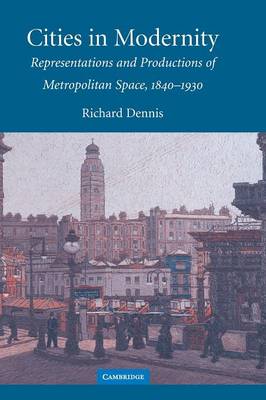Cambridge Studies in Historical Geography
2 total works
What made cities 'modern' in the nineteenth and early twentieth centuries? Cities in Modernity explores connections between culture, economy and built environment in cities of this period, drawing its evidence principally from London, New York and Toronto. The book discusses both the cultural experience of modernity and the material modernization of cities, placing special emphasis on their historical geographies, on the production, representation and use of urban space. The opening chapters present new ways of seeing cities in political and religious discourse, social survey, mapping, art and literature. The book then concentrates on new kinds of public and private spaces, such as apartment buildings, office blocks and department stores, and the networks of communication between them. An important theme throughout is the gendered experience of the new types of environment. The book will appeal to scholars and students of historical geography, urban history and cultural studies.
To contemporaries the nineteenth century was 'the age of great cities'. As early as 1851 over half the population of England and Wales could be classified as 'urban'. In the first full-length treatment of nineteenth-century urbanism from a geographical perspective, Richard Dennia focuses on the industrial towns and cities of Lancashire, Yorkshire, the Midlands and South Wales, that epitomised the spirit of the new age. In recent years urban historians and geographers have produced a wide range of detailed studies, both of particular cities and of specific aspects of nineteenth-century urban society, including the housing system, local government, public transport, class structure, residential segregation and social and geographical mobility. Dr Dennis offers a critical review of this research, integrated with his own original study of mobility, social interaction and community in the West Yorkshire town of Huddersfield.

